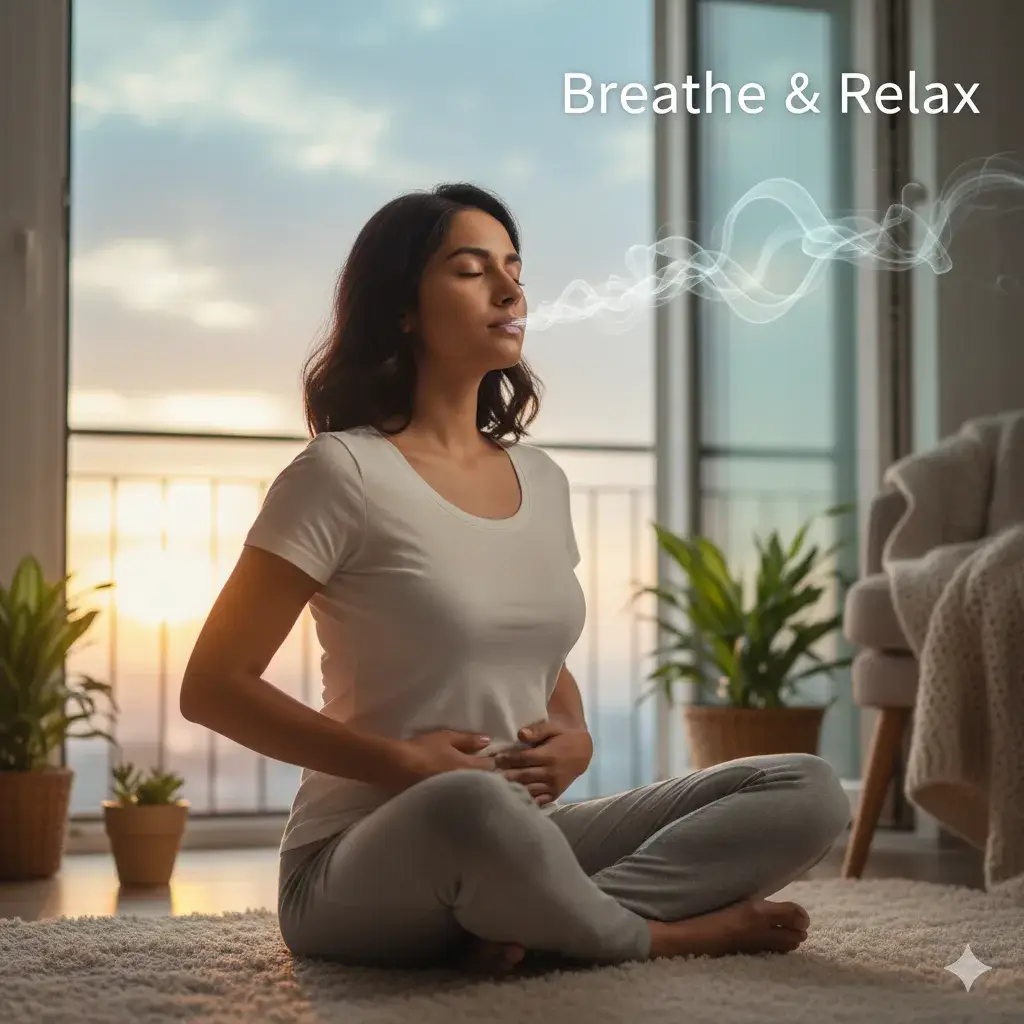Why Your Lungs Are the Cheapest Therapists You’ll Ever Meet
I used to think “just breathe” was the most useless advice on the planet—right up there with “have you tried being happy?”
Then one night, somewhere between a missed deadline and a toddler who refused to sleep, I counted my breaths because I’d run out of swear words. Ten slow inhales later my heart wasn’t auditioning for a drum solo anymore. No incense, no app, no guru on a mountain. Just lungs doing the quiet, boring magic we forget they know how to do.
That moment sent me down a rabbit hole. I read the papers, annoyed a few scientists with questions, and tested every breathing fad short of humming into a didgeridoo. The short version: most of the flashy stuff on social media is recycled hot air, but a handful of techniques actually calm the nervous system in measurable ways. Below is the no-fluff field guide I wish someone had handed me when stress still felt like a permanent roommate.
What Stress Really Does Inside Your Ribcage
When your brain tags an email subject line as “danger,” the sympathetic system dumps adrenaline into the blood stream. Heart rate jumps, peripheral vessels constrict, and breathing shifts to fast-shallow chest puffs. This is handy if you’re about to wrestle a leopard; it’s overkill when the predator is a Slack notification.
The problem is that modern stress doesn’t end with a triumphant sprint. It lingers, which means those tiny shoulder-level breaths stick around too. After a few hours the blood becomes slightly more acidic, the neck muscles tighten, and the mind starts scanning for the next threat. Cue the 3 a.m. thought spiral about that thing you said in 2014.
Slow, diaphragmatic breathing nudges the vagus nerve, the long wandering cable that tells the brain “we’re not dying, stand down.” The heart slows, cortisol production drops, and the prefrontal cortex (the bit in charge of sensible decisions) comes back online. You can’t always delete the source of stress, but you can interrupt the chemistry that turns it into suffering.
The Golden Rule: Low and Slow Beats Fancy and Fast
Before we get to techniques, tattoo this on the inside of your eyelid: the exhale matters more than the inhale. Extending the out-breath stimulates the parasympathetic response; inhaling too deeply too quickly can actually rev you up. Think of it like brakes versus gas. Four-second inhale, six-second exhale is my everyday starter. Once that feels boring, you can play with ratios, but don’t audition for a breath-holding record on day one.
Box Breathing (a.k.a. the Navy-SEAL Special)
Soldiers use this because it works in chaotic places and requires zero kit. Picture a square:
Inhale through the nose for a slow count of four.
Hold the top for four (no clamping—just pause).
Exhale through the nose or pursed lips for four.
Hold empty for four.
Repeat four rounds, then reassess. If you feel light-headed, shorten the count; the goal is calm, not a free spin class for your brain. I do this in the car before walking into the grocery store—seat belt still on, podcast muted, nobody notices.
4-7-8: The One You Can Do While Your Boss Rambles
Popularised by Dr. Weil, this is box breathing’s edgy cousin. Inhale quietly through the nose for 4, hold for 7, blow the air out like you’re fogging a mirror for 8. The long exhale triggers the “relax and digest” reflex; the brief hold lets oxygen swap efficiently. Three cycles tame a racing heart; more than eight can make you woozy, so don’t get ambitious in the middle of a meeting.
Tip: Touch the tip of your tongue to the ridge behind the top teeth. It opens the airway a fraction and stops that “not getting enough air” panic.
Coherent Breathing (a.k.a. the Five-Second Sweet Spot)
Heart-rate variability geeks love this. Breathe in for five, out for five, no pause. Ten breaths per minute, like a metronome set to “chill.” Do it for five minutes and HRV climbs, which correlates with better emotional regulation. I stick on a boring piano playlist and count “one-Mississippi” in my head. If counting feels like homework, there are free apps that vibrate at five-second intervals; airplane mode keeps the notifications out.
Double-Legit Exhale (My Rename for Extended Exhalation)
This is the sneak attack I use when insomnia hits. Lie on your back, knees bent, book under the head so the airway is straight. Inhale through the nose for four, exhale for eight—maybe ten if the air slides out easily. The first few rounds feel pointless; around breath six the diaphragm finally unclenches and the ribs drop like a sigh that got permission. I rarely reach twelve before the mind wanders off to sleep. If it doesn’t, at least I’m resting instead of rehearsing tomorrow’s imaginary arguments.
Buteyko Light (Don’t Hyperventilate Yourself Silly)
The full Buteyko method is a course in itself, but the starter drill is simple: after a normal exhale, pinch the nose and hold the breath until you feel the first clear urge to breathe (not until your face turns eggplant). Resume nasal breathing, stay calm, repeat five times. It raises CO2 tolerance, which sounds backwards but actually helps oxygen reach tissues. Athletes use it; asthmatics swear by it. I use it when my sinuses feel tight and coffee breath is stuck in the throat.
How Long Before the Magic Kicks In?
Studies see vagal tone changes in as little as ninety seconds, but the subjective “I’m okay” moment usually arrives after two to five minutes. Think of it like turning a bulky ship: the engine room gets the memo quickly, the rest of the vessel needs a wider arc. If nothing shifts, check three things:
Are you breathing with the chest or the belly? Put one hand on the navel; it should rise first.
Are you forcing the inhale? Imagine sipping air through a narrow straw, not hoovering it.
Are you bracing for results? Trying to relax is its own stressor. Let the count absorb your focus; side-effects will arrive uninvited.
Building the Habit Without Turning Into a Breathing Bore
Pair the practice with something you already do daily:
Morning coffee: five box breaths while the kettle boils.
Red traffic lights: coherent breathing until the light flips green (ignore the honker behind you).
Netflix credits roll: 4-7-8 before you autoplay the next episode.
Stacking the new habit onto an existing one piggybacks on neural real estate that’s already paved. Willpower saved, guilt avoided.
Can You Overdose on Slow Breathing?
Technically, yes. Push the exhale too long and CO2 climbs; you’ll feel tingly or dizzy. That’s the body’s fire alarm—listen. Pregnant women, people with severe asthma, or anyone recovering from rib injuries should ease in and maybe ping a clinician first. For the rest of us, the worst side-effect is looking like we’re nodding off in public.
Why Apps Can Help and Still Annoy You
I’ve tried paid subscriptions with rainforest soundtracks and animated lungs that inflate like balloons. They’re training wheels. After a week I turned the voice prompts off; the phone became a silent counter. If you need a number on a screen to stay honest, use it—just don’t let another glowing rectangle become the boss of your calm. Set a daily reminder, then wean yourself once the rhythm feels like tying shoes.
Real-World Stories So You Know It’s Not Just Influencer Hype
– Anita, 42, Mumbai commuter: Does coherent breathing on the metro. She says the jostles feel less personal now; she arrives at work without rehearsing arguments in her head.
– Luis, 29, Barcelona barista: Uses 4-7-8 when the espresso machine queue backs up. Fewer broken cups, bigger tips.
– Me, 35, copywriter: Survived a root-canal without sedation by box-breathing through the drill noise. Dentist asked if I was falling asleep.
When Breathing Alone Isn’t Enough
Chronic stress has co-conspirators: lousy sleep, ultra-processed food, doom-scrolling, money worries. If you’re doing five minutes of fancy breathing and then mainlining anxiety on social media for fifty, that’s like mopping the floor while the tap is open. Treat the exercises as the first domino, not the whole row. Therapy, movement, boundaries, vegetables—boring list, still true.
Quick-Reference Cheat Sheet (Pin This on the Fridge)
Box: 4-4-4-4, four rounds, eyes open or shut.
4-7-8: three cycles, tongue relaxed.
Coherent: 5-5 for five minutes, no pauses.
Extended exhale: 4-8, belly soft, book under head.
Buteyko light: gentle breath-hold x5, nasal only.
Pick one, stay consistent for a week, then rotate if you get bored. Mastery looks like forgetting the numbers and still breathing like a calm mammal.
The Part Where I Admit I Might Be Wrong
Research on breathing is young; most studies are small, some are funded by apps that sell subscriptions. What works for a Navy SEAL might flop for a night-shift nurse. If any technique spikes your anxiety or feels like suffocation, bail out. Your nervous system is the final authority, not a blog post—even one as charming as this.
Closing Thought
Stress isn’t going extinct; inboxes will refill, kids will yell, prices will rise. But the machinery that keeps you alive happens to moonlight as a volume knob for calm. Learn the dial, twist it when the noise gets loud, and get back to whatever you were doing—maybe a little less rattled, definitely still human.



